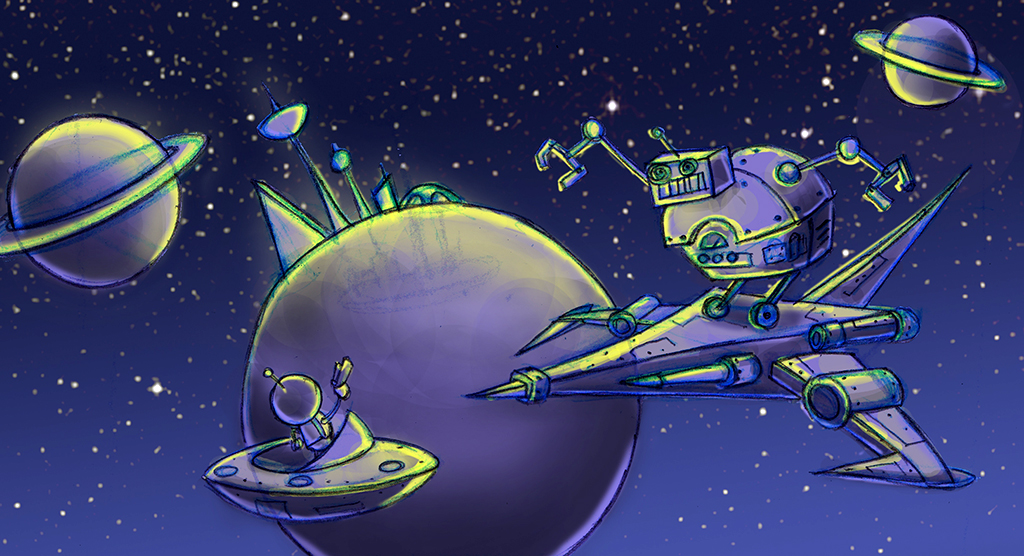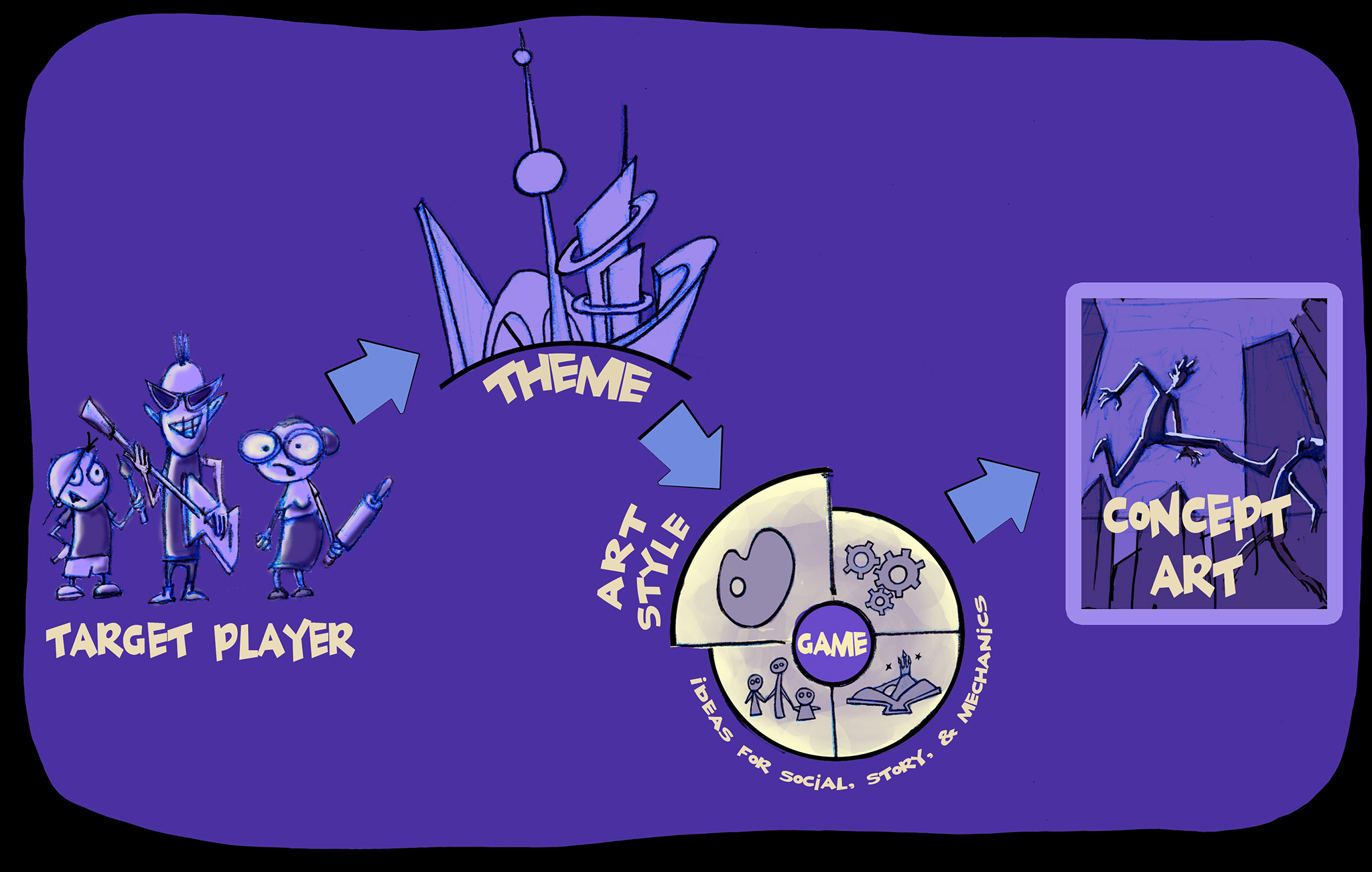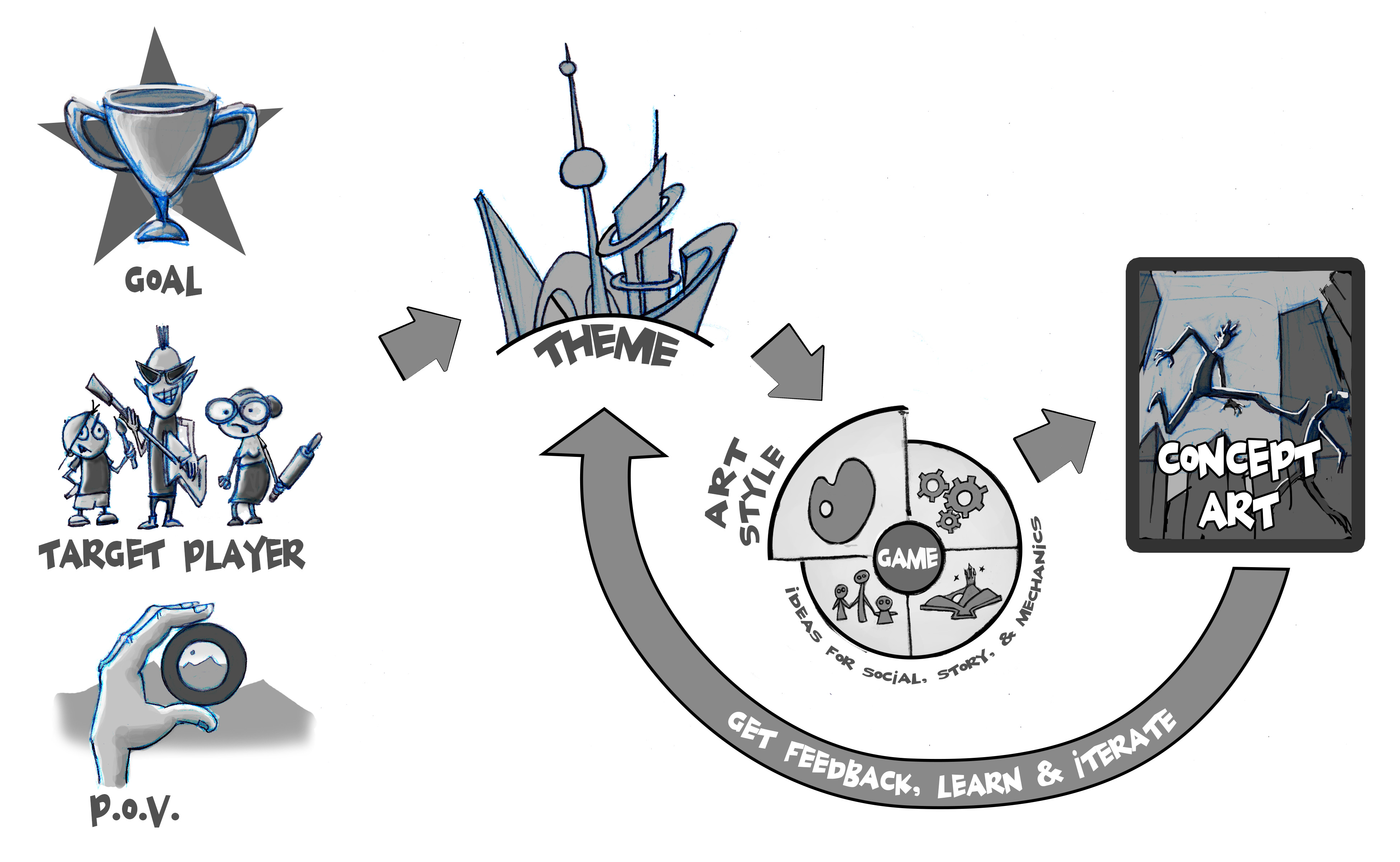3 Rules of Thumb for Game Storytelling that Works

Added on 6 February 2017
By WpFlara!-14?!
1 Comments
Adding storytelling to your game can help you connect emotionally to your players, add meaning to the experience, and increase long-term engagement. But stories can become more of a nuisance if not implemented properly. Following a few rules of thumb will help you add storytelling that does not clash with the rest of the experience.
Why Story
As I mentioned in a previous article, a combination of good art and fun game mechanics is a very effective way to attract players and create immediate engagement. But even good game mechanics can get repetitive and tedious over time unless they are accompanied by a larger meaning or drive, which is often provided by other elements like story, and social connection.
Events are much more meaningful if they are tied to a larger story. When playing basketball, scoring a basket is fun, but the experience is much more meaningful and powerful if that basket is the winning basket at the end of a game against a long-time rival team, even more if winning will let us get a scholarship to a renowned college… and will make us the first in our family to get a college degree… which will eventually let us to help our family get out of poverty and… you get the idea.
What is so powerful about stories is that they can wrap up the combination of ideas and emotions that form our experiences in ways that we can easily understand and link to our values and other experiences in our lives. A story can turn an abstract goal into something that relates to our values and views of the world.
Here are 3 rules of thumb to help you determine if you have a story that works to make your game more compelling without annoying players:
Rule of Thumb 1: Start with a Clear Conflict
There is one single element that fuels a good story: conflict, says Evan Skolnick in his excellent book “Video Game Storytelling, What Every Developer Needs to Know About Narrative Techniques.” He is right. Story is not a lot of blah blah blah, it is not fueled by details about characters, feelings, and places, it is fueled by conflict, by someone wanting something and not being able to achieve it because of something else. Make that conflict clear as soon as you can in your game.
The more your players can relate to the story’s conflict and to what is at stake, the more compelling your story will be for them. The faster you can introduce your players to that conflict and why it matters, the sooner the easier it will be for them to find meaning in the activities and goals they need to complete.
The conflict you show your players first doesn’t need to be the only one. It doesn’t even need to be the main one, but it should be the one that helps the player makes sense of what he/she needs to do in the game next.
Rule of Thumb 2: First Do, Then Show, Then Tell
There is an old axiom in Hollywood that says: “show don’t tell.” If you want to communicate how courageous a character is, don’t say it, instead show the character doing something courageous. In the same book for video game storytelling I mentioned above, Evan Skolnick says that in games, where the players are active participants, this axiom can be modified to: “do, then show, then tell.” If you want to communicate how courageous and powerful a character is, give her powerful abilities and give her big challenges to face, instead of telling the player the attributes of her character, let her can experience them herself.
If you cannot find a way to communicate story through actions, then use visuals as a second option, and only if there is no other way of conveying important information that your player needs in order to make sense of what she is doing, say it through dialogue or text.
Rule of Thumb 3: Keep It Simple and Minimal.
The right story makes the game more intuitive, but to do that it needs to be simple. It can get deeper and more complex as the game progresses, but their primary goal is to make your game’s goals and rules easier to connect with and easier to understand. If the story is not making it easier to play, chances are it is not the right story.
The story should also be kept at a minimum. One of the main mistakes that game developers make when adding story is trying to communicate at the beginning of the game all the background of the story to the players. Players do not care about your story details or your characters until they are more invested in the experience as a whole. It is important to provide meaning, but you don’t have to provide the player with more information than the bare minimum to make your immediate goals and activities make sense. The worse thing you can do is present and player with a bunch of information that they don’t yet care about. Long dialogues and explanations are usually skipped and all your work will be in vain. Start simple, and add complexity only if the rules and goals of the game require it.
Evan Skolnick divides story facts into 3 categories: first, facts that you need to know right now to understand what you need to do in the experience; second, facts that will be important later in the experience but you don’t need to know yet; and third, facts that maybe add flavor but are not essential at any time in the experience to understand what you need to do. As a rule, the only information you really need to give the player is the one related to the first category. Save the rest for later and even then try to convey it first through actions and visuals.
Chess
Let’s look at Chess as an example. It maybe an extreme case but I think it exemplifies the points that I am making. The conflict is simple and easy to understand: you are a king with a court and an army, your enemy is another king with his own court and army and you need to defeat him. There are other details in the story about who is in your court, which characters are important and powerful, how big is your army, etc., but all that information is communicated through actions and visuals. You know who is your enemy because your team is one color and your opponent is the opposite color. You know that there are different characters because your pieces have different shapes. You know who is in your court and how powerful they are because your different pieces have different attributes and behaviors, and some of these attributes prove to be more powerful. The story is simple and minimal. It helps us make the rules and goals of the game more intuitive; like the fact that only knights on horses can jump other pieces, or that the most important piece is the king, but it does not give us additional information that is not essential to understand what to do next.
Conclusion
Story is an important tool to help us add meaning and connect emotionally to an experience. But the wrong story could turn into an annoyance to the player. By following these 3 rules you can avoid wasting time and resources developing stories that don’t help your game: 1) Introduce a clear and easy to understand conflict as soon as you can. 2) Communicate your story through actions first, visuals second, and only as a last resort through dialogue and narration. 3) Keep the story simple and minimal, give you player only the information than helps him/her understand what he/she needs to do in the game at that point.



